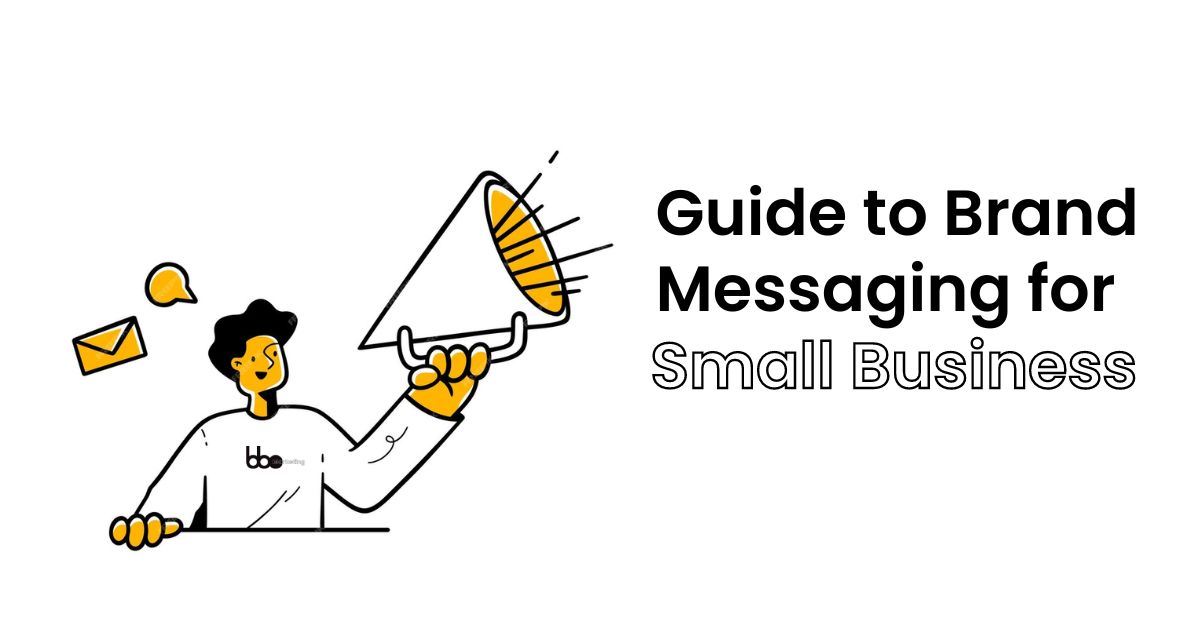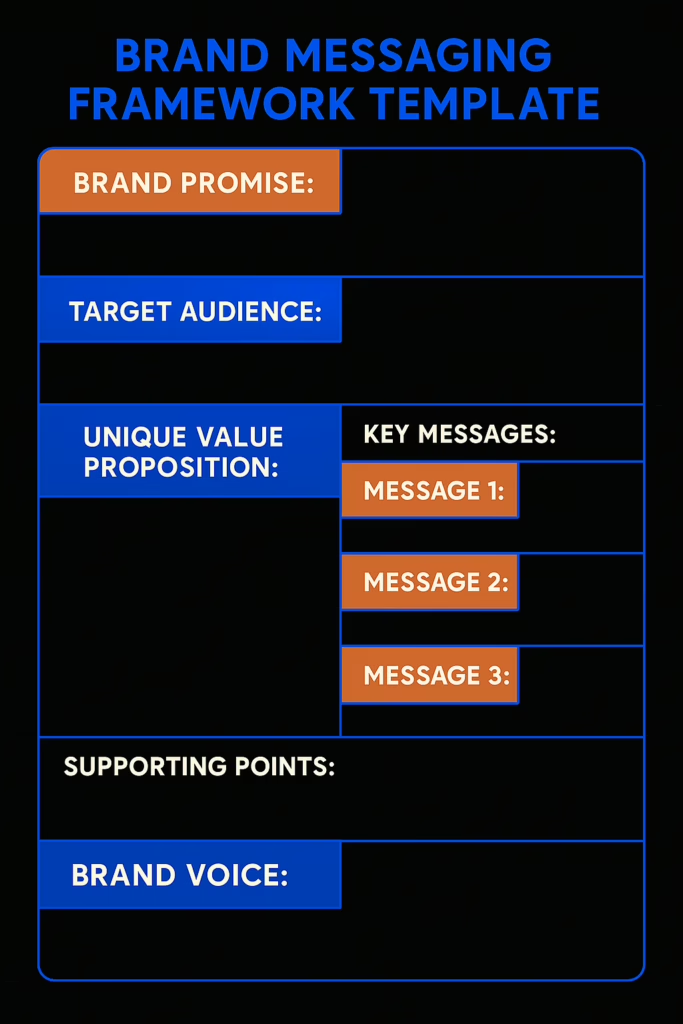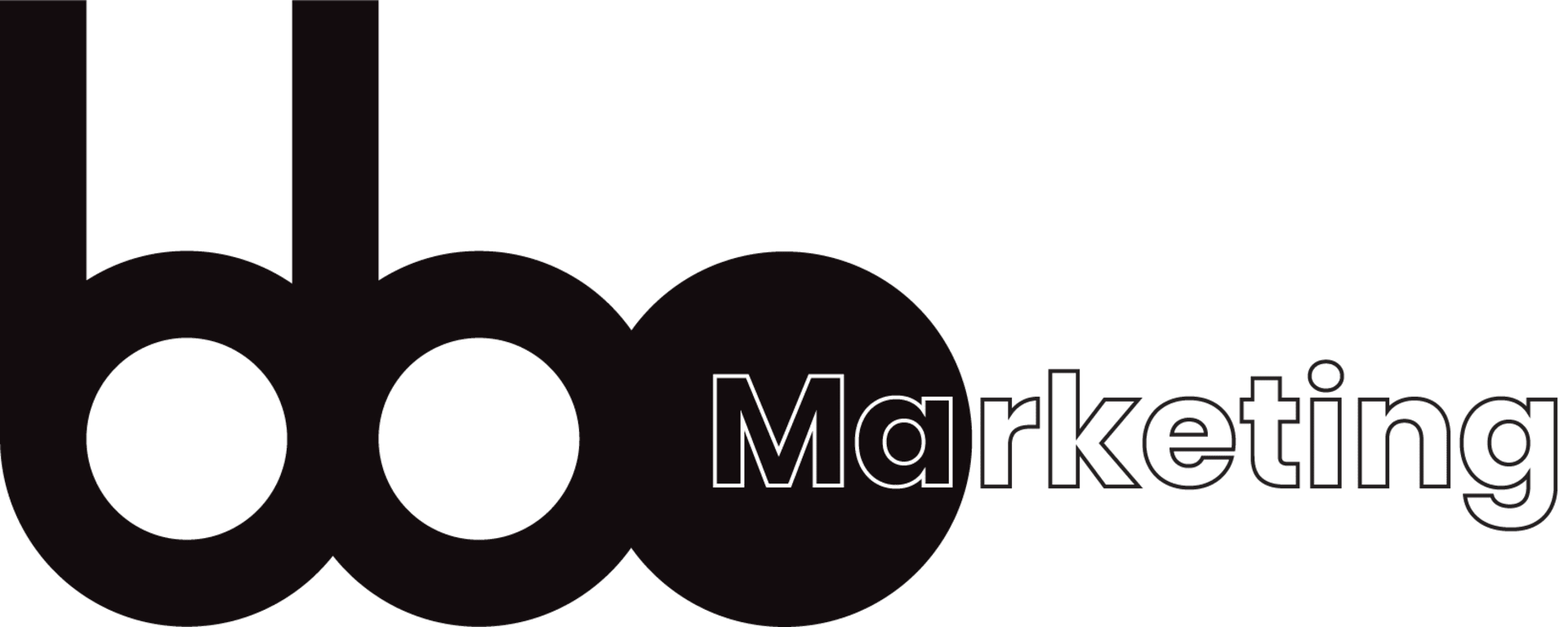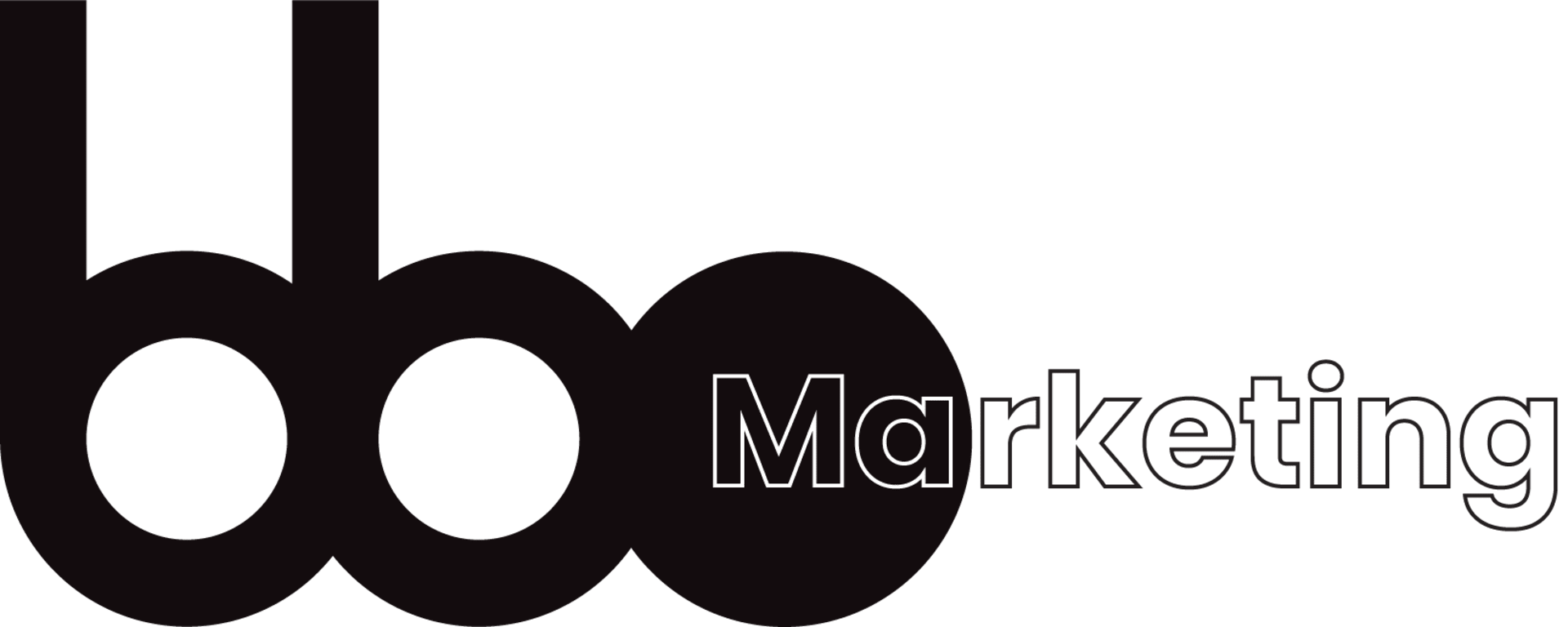
Brand Messaging Guide for 2025 With Examples, Framework template & Strategy
In today’s competitive business landscape, Branding is unavoidable and effective brand messaging is crucial for standing out and connecting with your target audience with your Brand. According to a recent study by Lucidpress, consistent brand presentation across all platforms can increase revenue by up to 23%. This comprehensive guide will explore the intricacies of brand messaging, covering everything from basic concepts to advanced strategies.
Brand Messaging Guide
See How BBO Marketing Can Drive More Sales to Your Small Business
Branding: Build a cohesive brand identity with our comprehensive services, including Brand Kit, Brand Management, and Social Media Branding.
Marketing: Drive traffic and engagement through SEO, Content Marketing, and Paid Media strategies that deliver measurable results.
Designing: Elevate your online presence with stunning Web Designing, intuitive UI/UX, and high-converting Landing Pages.
Brand Messaging meaning and definition
“Brand messaging is the art of communicating your company’s value proposition, personality, and unique selling points to your target audience. It’s the foundation of your brand’s identity and plays a crucial role in how customers perceive and interact with your business. “
Brand messaging is a crucial element of branding strategies as it defines how a business communicates its values, mission, and unique selling points to its audience. It ensures consistency across all marketing channels, helping to build trust and recognition among customers.
A strong brand message resonates with the target audience, evokes emotions, and differentiates the brand from competitors. By maintaining a clear and compelling message, businesses can create a lasting impact and strengthen their overall brand identity.
Also See: Brand Strategy for Startup Business
Key Components of Brand Messaging
- Brand Message: The core idea that encapsulates what your brand stands for.
- Brand Messaging Framework: A structured approach to organizing and presenting your brand’s key messages.
- Brand Messaging Hierarchy: The prioritization of your messages based on importance and relevance to your audience.
- Brand Messaging Matrix: A visual tool that helps organize and align your messages across different audience segments and communication channels.
Brand Messaging Framework
A brand messaging framework is a strategic tool that helps ensure consistency and clarity in your communication efforts.
According to a survey by Demand Metric, 71% of companies that use a structured messaging framework report higher customer satisfaction rates.
How to Develop a Brand Messaging Framework?
Steps to Create a Brand Messaging Framework:
- Define your brand’s mission and vision
- Identify your target audience (segmentation)
- Articulate your unique value proposition
- Develop key messages
- Create supporting points for each key message
- Establish your brand voice and tone
Creating a strong brand messaging framework is crucial for effective communication with your audience. Follow these six steps to develop a framework that resonates with your target market and aligns with your business goals.
Step 1: Define your brand’s mission and vision
Your brand’s mission and vision statements serve as the foundation for all your messaging efforts. They encapsulate why your company exists and what you aim to achieve in the long term.
– Mission statement: This should articulate your brand’s purpose and the value it brings to customers and society.
– Vision statement: This outlines your brand’s aspirations and the future state it aims to create.
Example:
Mission: “To accelerate the world’s transition to sustainable energy.” (Tesla)
Vision: “To create the most compelling car company of the 21st century by driving the world’s transition to electric vehicles.” (Tesla)
Step 2: Identify your target audience
Understanding who you’re speaking to is crucial for crafting effective messages. Develop detailed buyer personas that represent your ideal customers.
– Conduct market research to gather demographic and psychographic data.
– Create 2-3 detailed buyer personas, including information such as:
– Age, gender, location
– Job title and income level
– Goals and challenges
– Preferred communication channels
– Decision-making factors
Example: A B2B software company might have personas like “Tech-Savvy Tom” (IT Manager) and “Executive Ellen” (CFO).
Step 3: Articulate your unique value proposition
Your unique value proposition (UVP) is a clear statement that describes the benefit of your offer, how you solve your customer’s needs, and what distinguishes you from the competition.
– Identify your key benefits and features.
– Understand your competitors’ offerings.
– Highlight what makes your brand unique.
– Craft a concise UVP that speaks directly to your target audience’s needs.
Example: “Slack is a collaboration hub for work, no matter what work you do. It’s a place where conversations happen, decisions are made, and information is always at your fingertips.” (Slack)
Step 4: Develop key messages
Key messages are the core ideas you want to communicate about your brand. They should be clear, concise, and aligned with your UVP.
– Brainstorm potential messages that align with your mission, vision, and UVP.
– Refine these ideas into 3-5 key messages.
– Ensure each message is relevant to your target audience and differentiates your brand.
Example (for an eco-friendly cleaning product company):
1. Our products are 100% biodegradable and non-toxic.
2. We use sustainable packaging made from recycled materials.
3. Our formulas are as effective as traditional cleaners but safer for your family and the environment.
Step 5: Create supporting points for each key message
Supporting points provide evidence and elaboration for your key messages. They help to build credibility and provide more detailed information.
– For each key message, develop 2-3 supporting points.
– Use facts, statistics, testimonials, or examples to back up your claims.
– Ensure these points are specific and compelling.
Example (continuing the eco-friendly cleaning product company):
Key Message: Our products are 100% biodegradable and non-toxic.
Supporting Points:
– All ingredients are derived from plant-based sources.
– Our formulas have been certified by independent environmental organizations.
– We publish a full list of ingredients for every product, ensuring transparency.
Step 6: Establish your brand voice and tone
Your brand voice is the personality you use in your communications. It should be consistent across all platforms and align with your brand values and target audience preferences.
– Define 3-5 characteristics that describe your brand’s personality (e.g., friendly, professional, innovative).
– Create guidelines for how these characteristics translate into written and visual communication.
– Develop a style guide that includes examples of do’s and don’ts for your brand voice.
Example:
Brand Voice: Friendly, knowledgeable, and empowering
Do: Use conversational language and explain complex topics in simple terms.
Don’t: Use overly technical jargon or a condescending tone.
By following these steps, you’ll create a comprehensive brand messaging framework that ensures consistency and effectiveness in all your communications. Remember, this framework should be a living document, regularly reviewed and updated as your brand evolves and market conditions change.
Brand Messaging Framework Template
A messaging framework is a simple guide that helps a brand explain what makes it special. It makes sure the brand’s message is clear, easy to understand, and different from competitors.
Here’s a simple template to get you started:

- Brand Promise:
- Target Audience:
- Unique Value Proposition:
- Key Messages:
- Message 1:
- Message 2:
- Message 3:
- Supporting Points:
- Brand Voice:
Brand Messaging Strategy
A well-defined brand messaging strategy ensures that your communication is consistent, impactful, and aligned with your business goals. Research by Salesforce indicates that 80% of customers say the experience a company provides is as important as its products or services.
Elements of a Strong Brand Messaging Strategy
- Clarity: Ensure your messages are easy to understand and free from jargon.
- Consistency: Maintain a uniform voice across all platforms and touchpoints.
- Relevance: Tailor your messages to resonate with your target audience’s needs and preferences.
- Differentiation: Highlight what sets you apart from competitors.
- Authenticity: Be true to your brand’s values and personality.
Brand Messaging Architecture
Your brand messaging architecture serves as a blueprint for organizing and structuring your communication. It typically includes:
- Brand Essence
- Brand Promise
- Brand Pillars
- Key Messages
- Proof Points
- Tone of Voice
Implementing Your Messaging Framework
Once you’ve developed your brand messaging framework, it’s time to put it into action. Here are some key areas where your messaging framework should be applied:
Product Messaging Framework
Your product messaging framework should align with your overall brand messaging while focusing on the specific features, benefits, and value propositions of your products or services. A study by Gartner reveals that 80% of B2B buyers expect a buying experience tailored to their industry and role.
Marketing Messaging Framework
Your marketing messaging framework guides how you communicate your brand’s value across various marketing channels and campaigns. It ensures consistency while allowing for flexibility in different contexts.
Campaign Messaging Framework
For each marketing campaign, develop a specific messaging framework that aligns with your overall brand messaging but focuses on the campaign’s particular goals and target audience.
Tools and Templates for Effective Messaging
Brand Messaging Matrix Template
A messaging matrix helps you organize your key messages for different audience segments and communication channels. Here’s a basic template:
| Audience Segment | Key Message 1 | Key Message 2 | Key Message 3 |
|---|---|---|---|
| Segment A | |||
| Segment B | |||
| Segment C |
Brand Messaging Hierarchy Template
Your messaging hierarchy template should prioritize your messages based on importance and relevance:
1. Primary Message
- Supporting Point A
- Supporting Point B
2. Secondary Message
- Supporting Point C
- Supporting Point D
3. Tertiary Message
- Supporting Point E
- Supporting Point F
Brand Messaging Guide Template
A comprehensive brand messaging guide typically includes:
- Brand Story
- Mission and Vision Statements
- Core Values
- Target Audience Profiles
- Unique Value Proposition
- Key Messages
- Tone of Voice Guidelines
- Messaging Do’s and Don’ts
Best Brand Messaging Examples
Let’s look at some real-world examples of successful brand messaging frameworks:
1. Apple:
- Key Message: “Think Different”
- Supporting Points: Innovation, User-friendly design, Premium quality
2. Nike:
- Key Message: “Just Do It”
- Supporting Points: Inspiration, Performance, Athleticism
3. Coca-Cola:
- Key Message: “Open Happiness”
- Supporting Points: Refreshment, Togetherness, Positivity
How do I create a messaging framework?
Now that we’ve covered the key concepts and components, let’s walk through the process of creating your own messaging framework:
- Start with Research: Understand your market, competitors, and target audience. Use surveys, focus groups, and analytics to gather insights.
- Define Your Brand’s Core: Articulate your mission, vision, and values. These form the foundation of your messaging.
- Identify Your Unique Value Proposition: What makes you different from competitors? Why should customers choose you?
- Develop Key Messages: Create 3-5 main messages that communicate your brand’s value and differentiation.
- Create Supporting Points: For each key message, develop 2-3 supporting points that provide evidence or elaboration.
- Establish Your Brand Voice: Define the tone and style of your communication. Is it formal or casual? Serious or playful?
- Create a Messaging Matrix: Organize your messages for different audience segments and channels.
- Test and Refine: Use A/B testing and customer feedback to optimize your messaging over time.
Measuring the Success of Your Brand Messaging
To ensure your brand messaging is effective, you need to measure its impact. Here are some key metrics to consider:
- Brand Awareness: Measure the percentage of your target audience that recognizes your brand.
- Message Recall: Test how well your audience remembers your key messages.
- Brand Sentiment: Monitor social media and customer feedback for positive or negative sentiment.
- Engagement Rates: Track likes, shares, comments, and click-through rates on your content.
- Conversion Rates: Measure how effectively your messaging drives desired actions.
According to a study by Bynder, companies with a strong brand messaging strategy see an average increase of 23% in their annual revenue.
Common Pitfalls in Brand Messaging
As you develop and implement your brand messaging, be aware of these common mistakes:
- Inconsistency: Ensure your messaging is uniform across all platforms and touchpoints.
- Lack of Differentiation: Avoid generic messages that could apply to any brand in your industry.
- Ignoring Customer Feedback: Regularly update your messaging based on customer insights and market changes.
- Overcomplication: Keep your messages clear and easy to understand.
- Neglecting Emotional Appeal: Remember that effective messaging often taps into emotions.
The Future of Brand Messaging
As technology and consumer behavior evolve, so too must brand messaging strategies. Here are some trends to watch:
- Personalization: According to Epsilon, 80% of consumers are more likely to make a purchase when brands offer personalized experiences.
- Voice Search Optimization: With the rise of voice assistants, brands need to adapt their messaging for voice search queries.
- Visual Messaging: As attention spans decrease, visual content like infographics and videos become increasingly important.
- Purpose-Driven Messaging: Consumers, especially younger generations, are drawn to brands that stand for something beyond profit.
See How BBO Marketing Can Drive More Sales to Your Small Business
Branding: Build a cohesive brand identity with our comprehensive services, including Brand Kit, Brand Management, and Social Media Branding.
Marketing: Drive traffic and engagement through SEO, Content Marketing, and Paid Media strategies that deliver measurable results.
Designing: Elevate your online presence with stunning Web Designing, intuitive UI/UX, and high-converting Landing Pages.
Wrapping Up
Effective brand messaging is a powerful tool for connecting with your audience, differentiating your brand, and driving business success. By developing a comprehensive messaging framework and consistently applying it across all your communication channels, you can create a strong, memorable brand that resonates with your target audience.
Remember, brand messaging is not a one-time effort but an ongoing process. Regularly review and refine your messaging to ensure it remains relevant and impactful in an ever-changing market landscape.
By following the strategies and templates outlined in this guide, you’ll be well-equipped to create a brand messaging framework that sets your business apart and drives meaningful connections with your audience.
FAQs: Brand Messaging Guide for Small Business in 2025
What is the Messaging Brand Framework?
A messaging brand framework is a strategic structure that defines how a brand communicates its core values, unique value proposition, and key messages to its audience. It ensures consistency and clarity across all communication channels.
What are the 3 C’s of Brand Messaging?
- Clarity – Ensure messages are simple and easy to understand.
- Consistency – Maintain a uniform voice across platforms.
- Connection – Make messages resonate with your audience emotionally and practically.
What are the 6 Steps to Create a Successful Brand Messaging Framework?
- Define your brand’s mission and vision.
- Identify your target audience.
- Articulate your unique value proposition.
- Develop key messages.
- Create supporting points for each key message.
- Establish your brand voice and tone.
What is the Brand Message Structure?
A structured brand message includes:
- Brand Promise: The core commitment to customers.
- Target Audience: Who the brand serves.
- Unique Value Proposition: What differentiates the brand.
- Key Messages: Three to five main statements conveying brand value.
- Supporting Points: Evidence reinforcing key messages.
- Brand Voice: The tone and style of communication.
What is an Example of Brand Messaging?
Nike:
- Key Message: “Just Do It.”
- Supporting Points: Inspiration, Performance, Athleticism.
What is Key Brand Messaging?
Key brand messaging refers to the primary statements that define and communicate a brand’s value, differentiation, and purpose to its audience.
What is Brand Messaging Hierarchy?
A brand messaging hierarchy prioritizes messages based on importance:
- Primary Message – Core brand promise and value proposition.
- Secondary Messages – Supporting brand attributes.
- Tertiary Messages – Additional messaging details.
What is the Difference Between a Tagline and a Brand Message?
- Tagline: A short, catchy phrase representing a brand (e.g., “Think Different” – Apple).
- Brand Message: A broader communication that conveys the brand’s identity, values, and promises.
What are Messaging Pillars?
Messaging pillars are the foundational themes that support a brand’s key messages. They provide structure and clarity in brand communication.
What is a Core Brand Message?
A core brand message is a concise statement summarizing what a brand stands for and its unique value to customers.
How to Craft a Brand Message?
- Define your brand mission and vision.
- Identify what makes your brand unique.
- Understand your audience’s pain points and aspirations.
- Use clear, concise language.
- Maintain a consistent tone across all communications.
How to Create a Messaging Framework?
Follow these steps:
- Research your market and audience.
- Define your brand’s mission, vision, and values.
- Develop key messages and supporting points.
- Establish your brand voice and tone.
- Organize messages into a messaging matrix.
- Test and refine based on feedback.
What is the Difference Between a Brand Message and a Marketing Message?
- Brand Message: Communicates the brand’s overall identity and value.
- Marketing Message: Tailored for specific campaigns, promotions, or audience segments.
What is a Product Messaging Framework?
A product messaging framework focuses on articulating the specific benefits, features, and value proposition of a product while aligning with the overall brand messaging.
What is a Strategic Messaging Framework?
A strategic messaging framework ensures that all communication aligns with the brand’s goals, audience needs, and market positioning, ensuring clarity and impact.
What are the Benefits of a Messaging Framework?
- Ensures consistency across marketing channels.
- Enhances brand recognition and credibility.
- Helps align internal and external communications.
- Increases engagement and conversion rates.
How to Write a Messaging Framework?
- Define the brand’s purpose and goals.
- Identify target audience segments.
- Develop key brand messages.
- Create a structured messaging matrix.
- Test and adjust messaging as needed.
By following these guidelines, businesses can develop a compelling brand messaging framework that fosters connection, consistency, and clarity in all communications.

